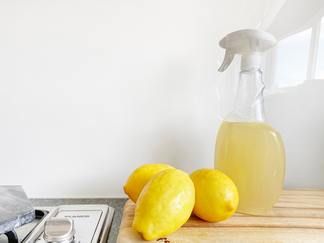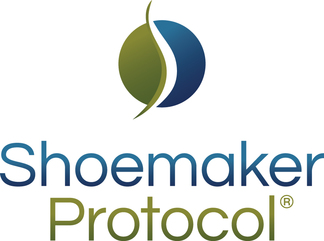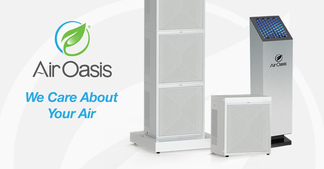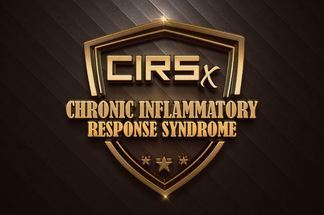CIRS Spring Cleaning Checklist

CIRS Spring Cleaning Checklist
Living with CIRS means cleaning and maintenance efforts must be ongoing and up to CIRS-safe standards. Spring is a perfect time to do a thorough examination and cleaning of the entire home and create a schedule for the year ahead.
To help you stay on track, with the help of the “Mold Illness: Surviving & Thriving” manual, we’ve put together a general maintenance inspection list below, along with a yearly (or twice-yearly) deep cleaning project list.
Roll up your sleeves, and prepare to become a rigorous cleaning expert. We won’t go as far as to say it gets “easier,” as cleaning and household maintenance does require some hard work! With the right information, tools, systems and support, you can experience less stress, overwhelm and frustration, and dive in and conquer! It does become more and more efficient and systemized as you get into a cleaning groove. Plus, enlisting helpers, along with your own can-do attitude, always makes for “lighter work.” And when you’re finished, the results look and feel amazing. The real reward of course is your continued good health – so here’s to it…!
RIGOROUS HOUSEHOLD CLEANING & MAINTENACE CHECKLIST
Depending on amount of activity in the home, we recommend doing a yearly or bi-yearly thorough clean and check, and also create an ongoing maintenance cleaning schedule as noted below.
The basic guidelines:
At least once a year, do a whole house cleaning and fogging. The rest of the year, you may be focused on safe spaces or potential higher problem areas, but at least once a year, give the entire home a thorough rigorous clean, including:
- HEPA vacuuming of floors and sofas
- Ceiling to floor, top to bottom, dusting of all surfaces with microfiber cloths
- Use Ammonia Compound cleaners in bathroom and kitchen surfaces (Fantastic or 409 are two examples). See Q&A on bleach below.
- Clean grout, tiling, sinks and showers thoroughly with ammonia compounds and use other effective kitchen/bathroom cleaning agents as necessary.
- Wet mop floors, and thoroughly dry them out.
- Clean any area rugs (see Q&A on steam cleaning below)
- Clear out clutter
It helps to keep up a weekly vacuuming and dusting schedule, especially in safe spaces, and also keep the other areas on a cleaning rotation schedule.
MAINTENANCE CHECKLIST:
Plumbing Fixtures (check frequently): toilets, under all sinks, showers, clothes washer, dish washer, refrigerators, automatic icemakers, and hot water heaters. Any indication of leaks need to be addressed immediately.
Check grout and sealing around showers, tubs, sinks, often.
Any fans installed to eliminate moisture need to be functioning properly.
Check furnace, AC units, attic and crawl space areas.
HVAC filters need to be changed regularly.
All windows and doors need to be inspected for problems with sealing or possible leaks.
Flooring needs to be inspected for moisture problems (bubbling, rippling, or buckling).
Periodic duct work inspection and cleaning needs to be scheduled.
Check all roof penetrations and general condition of roofing components (chimney flashing, roof to wall metal, plumbing vents, flashing, and skylights).
Make sure all penetrations are well sealed. Inspect fascia and roof overhang materials to ensure the materials are not degrading, cracked, or peeling.
Join the Surviving Mold Membership and gain access to the Q&A Portal, your direct link to Dr. Shoemaker, plus, we’ll be covering the nuances of rigorous cleaning and remediation, all through Spring.
It’s a great time to join the community and get the support you need to thrive. Membership also comes with: free VCS tests, premium resources, and more!
LEARN MORE and get started today.
We look forward to you being a part of the community!
Featured Resources for Community
The Surviving Mold Gift List
Give the precious gift of CIRS health & support with 10 gifts that keep on giving.
Shoemaker Protocol™ Quick Start:
The 3 initial steps to determine if mold is affecting you One of the most common questions we hear is, “how do I know if I have mold illness?” Rest assured, if you’re asking this question, you’ve come to the right place.
AirOasis The #1 CIRS Spring Cleaning Hack
Specialized air purifiers are revolutionizing deep cleaning, no matter the season. They’re a game changer for remediation purposes, too.
CIRSX Annual Conference June 5-8, 2025 in Tempe, Arizona!
Early Bird Discount ends March 7!
NEW EPISODE! Dr. Shoemaker on Episode #211 of the BetterHealthGuy Podcast!
New Episode! Dr. Shoemaker joins Scott on the BetterHealthGuy.com podcast to talk about the use of GENIE testing in Chronic Inflammatory Response Syndrome.




